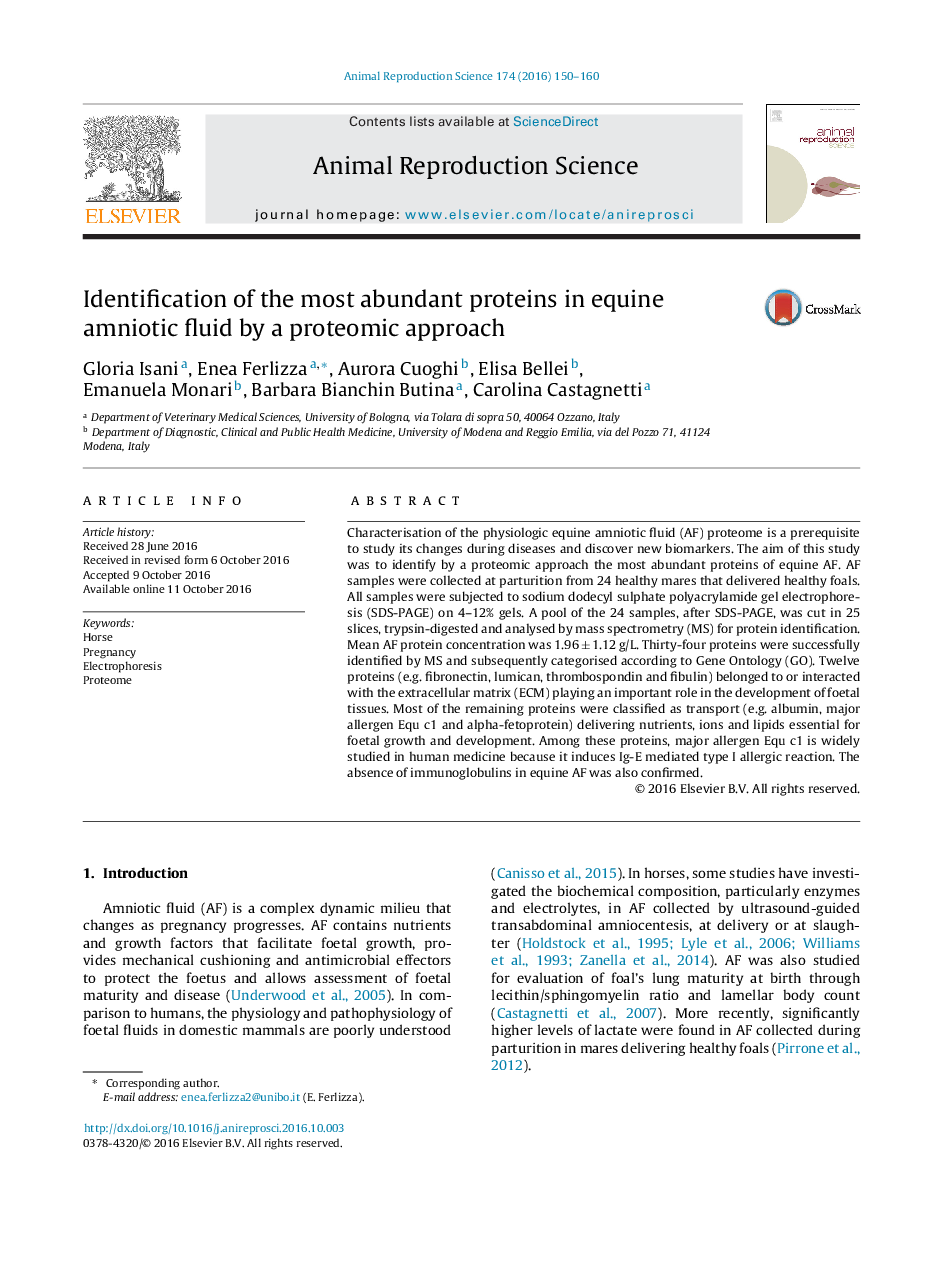| کد مقاله | کد نشریه | سال انتشار | مقاله انگلیسی | نسخه تمام متن |
|---|---|---|---|---|
| 5520373 | 1544703 | 2016 | 11 صفحه PDF | دانلود رایگان |
- Equine amniotic fluid was preliminary characterised for the first time.
- SDS-PAGE coupled to MS allowed the identification of the most abundant proteins.
- The three most abundant proteins were albumin, major allergen Eqc1 and fibronectin.
- The role of the extracellular matrix component in fetal maturation was highlighted.
- The importance of transport proteins like alfa-fetoprotein and PLTP was evidenced.
Characterisation of the physiologic equine amniotic fluid (AF) proteome is a prerequisite to study its changes during diseases and discover new biomarkers. The aim of this study was to identify by a proteomic approach the most abundant proteins of equine AF. AF samples were collected at parturition from 24 healthy mares that delivered healthy foals. All samples were subjected to sodium dodecyl sulphate polyacrylamide gel electrophoresis (SDS-PAGE) on 4-12% gels. A pool of the 24 samples, after SDS-PAGE, was cut in 25 slices, trypsin-digested and analysed by mass spectrometry (MS) for protein identification. Mean AF protein concentration was 1.96 ± 1.12 g/L. Thirty-four proteins were successfully identified by MS and subsequently categorised according to Gene Ontology (GO). Twelve proteins (e.g. fibronectin, lumican, thrombospondin and fibulin) belonged to or interacted with the extracellular matrix (ECM) playing an important role in the development of foetal tissues. Most of the remaining proteins were classified as transport (e.g. albumin, major allergen Equ c1 and alpha-fetoprotein) delivering nutrients, ions and lipids essential for foetal growth and development. Among these proteins, major allergen Equ c1 is widely studied in human medicine because it induces Ig-E mediated type I allergic reaction. The absence of immunoglobulins in equine AF was also confirmed.
Journal: Animal Reproduction Science - Volume 174, November 2016, Pages 150-160
